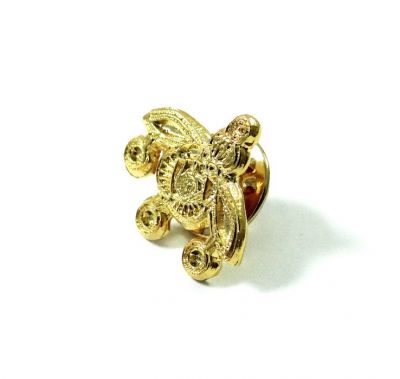We created this unique pin with the ''Bees'' of Malia. The gold pendant was discovered at the Necropolis of the Minoan Palace of Malia, in Crete and dates back to the Bronze Age, around 1800 B.C. The honeybees pendant is considered one of the most definitive archaeological findings of jewelry from the Minoan civilization and depicts two bees curved towards each other and their wings outstretched, clasping a honeycomb into which they are placing a small drop of honey.
Handmade brass
Dimensions: 2 cm x 1,7 cm x 2 mm
All prices include VAT.
The honeybees pendant was discovered in the Chrysolakkos Necropolis of the Minoan Palace of Malia on the island of Crete, and dates back to the Bronze Age, to the Protopalatial Period (1800 - 1700 BC). The bees of Malia are considered one of the most definitive archaeological findings of jewelry from the Minoan civilization.
The pendant is made from gold and depicts two bees, their bodies curved towards each other and their wings outstretched, clasping a honeycomb into which they are placing a small drop of honey. Gold discs hang from their wings, while an openwork sphere and suspension ring stand atop their heads. In the cultures of the Aegean, the bee was believed to be a sacred insect. Often, the bee appears in tomb decoration. It is believed that, honey was used in rituals and bees were associated with Demeter and Artemis.
The Bees of Malia is one of the most famous exhibits displayed in the Herakleion Archaeological Museum, in the island of Crete in Greece.
No posts found









